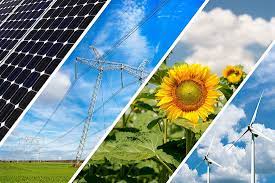Natural resources in agriculture are the soil, water, vegetation, sunlight and rainfall. These are natural resources and cannot be replaced once it is destroyed.

Soil: Soil is the basis on which everything is build; it is also the growth medium for plants, trees and scrubs to grow in. It is the solid part of the earth. Soil can be divided into three main groups: sand, loam and clay soils - each with its own characteristics and qualities. It is important to know these characteristics will influence the production process and erecting buildings on the farm.
Water and rainfall: Rainfall is the main source of water – nothing will survive without it. Water, thus the main role-player, will ensure the success of crop production or vegetative growth. Soil water - rainwater captured deep underneath the soil surface - is another source of water (boreholes). Harvesting of rainwater in dams can be used to strengthen the underground water level and can also be used for irrigation or drinking water for livestock. Water from rivers and large dams (e.g. Loskopdam Scheme) is used for irrigation of crops.
Vegetation: Natural vegetation is the cheapest source of roughage for livestock and game. This natural vegetation must be managed with care - prevent soil erosion, do not allow over grazing - these will lead to veld deterioration and lower production. The lower production of vegetation will have a negative impact on animal production. Veld management - one of the most important management tasks of a livestock farmer.
The farmer must know

Sunlight and temperature: Sunlight is necessary in the photosynthesis process and to provide the correct temperature for plants to germinate and grow. Sunlight can be used to generate energy through solar heating and photocells. Pollution can be minimised by making more use of sunlight energy and less fossil fuels which have a negative effect on the environment.